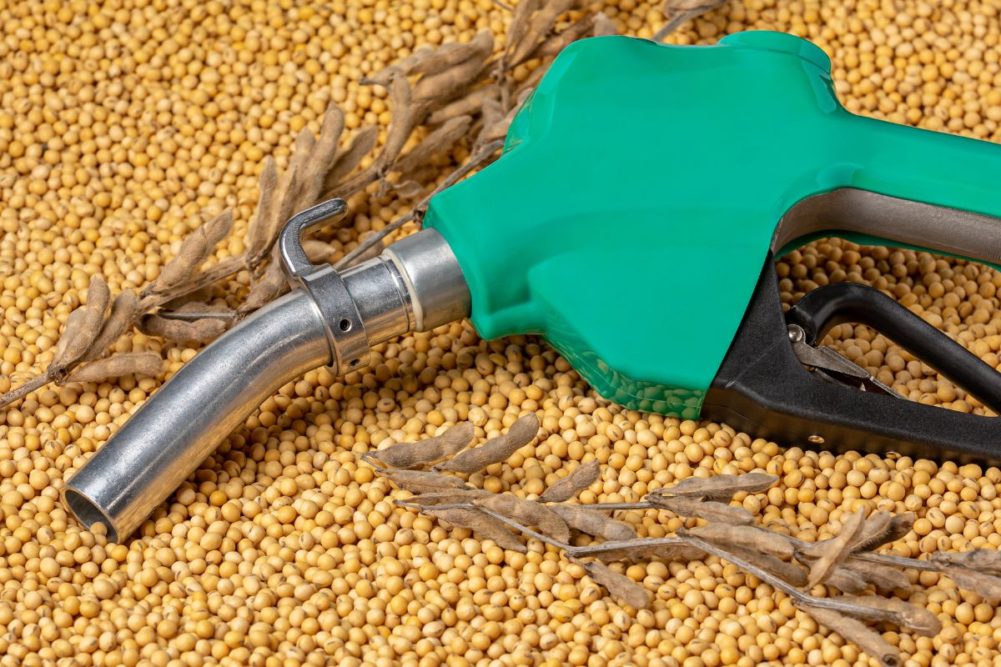WASHINGTON, DC, US — Dramatic growth in US renewable diesel production and capacity is causing significant market-altering shifts domestically and in foreign feedstock trends, according to a new report from the Foreign Agricultural Service (FAS) of the US Department of Agriculture.
Production is expected to continue to grow and alter feedstock markets, but the rate of growth will be highly dependent on federal and state policies, availability of feedstocks and sustained US soybean meal export gains, the FAS said.
Renewable diesel is made from feedstocks such as vegetable oils, animal fats or used cooking oil using a hydrogen treatment, which makes it chemically equivalent to petroleum diesel and can therefore be blended at higher levels.
Policies have driven the rapid production growth, particularly the California Low-Carbon Fuel Standard (LCFS) that offsets higher biomass-based diesel production costs through a carbon credit for meeting emission targets and has driven renewable diesel consumption in California.
From 2020 to 2023, growth in California consumption was more than double the consumption growth throughout the rest of the US. Biomass-based diesel accounts for about 60% of the California diesel pool while the rest of the US is in the low single digits.
Increased renewable diesel production has bolstered demand for feedstocks, causing US imports of vegetable oils and animal fats to increase dramatically, FAS said.
For example, canola oil imports have surged with the US jumping from 50%-60% of Canada canola oil exports to 91% in 2023.
“As expected, the collective imports for animal fats and vegetable oils have grown drastically in alignment with the growth of renewable diesel,” the FAS said. “In fact, U.S. import values of all animal fats and vegetable oils more than doubled from 2020 to 2023.”
US agricultural export market dynamics are also experiencing drastic shifts, with a drop in soybean exports due to competition with Brazil and reduced demand growth in China.
However, renewable diesel growth is partially offsetting falling exports by stimulating domestic soybean consumption, the FAS said. As a direct effect of expanding renewable diesel production, US soybean crush is forecast at a record for the fourth consecutive year.
US soybean oil premiums were so far above global vegetable oil prices that US exports plummeted, and the US became a net soybean oil importer for the first time in 2023.
Soybean crush surged on oil demand, leading to greater soybean meal supplies and record meal exports in 2022-23, the FAS said. Greater supplies and higher exports are expected to continue as 2024-25 US soybean meal exports are forecast at a record for the third consecutive year.
The US is expected to increase its share of global soybean meal exports from the typical 18% to 21% in 2024-25.
Looking ahead, increasing renewable diesel production should further exaggerate the impacts, however policy changes could present a wildcard as could feedstock availability, FAS said.
Still, US soybean oil exports should continue feeling downward pressure as biomass-based diesel production keeps them well below the historical average.
Impact on soybean meal production, consumption and trade is also uncertain since a large part of the growth in exports was due to reduced competition from Argentina.
When Argentina production recovers to normal levels, there likely won’t be enough global consumption for expanding US exports and that recovery, FAS said.
“Even if the United States can capture all global soybean meal import growth, US crush and renewable diesel growth could be limited by the ability to find an outlet for surplus soybean meal,” it said. “Based on global demand for soybean meal, soybean oil cannot continue to fuel renewable diesel production growth at current rates during the next few years without major changes to global soybean meal demand, shifts in exporter market shares or lower supplies in other exporting countries.”




